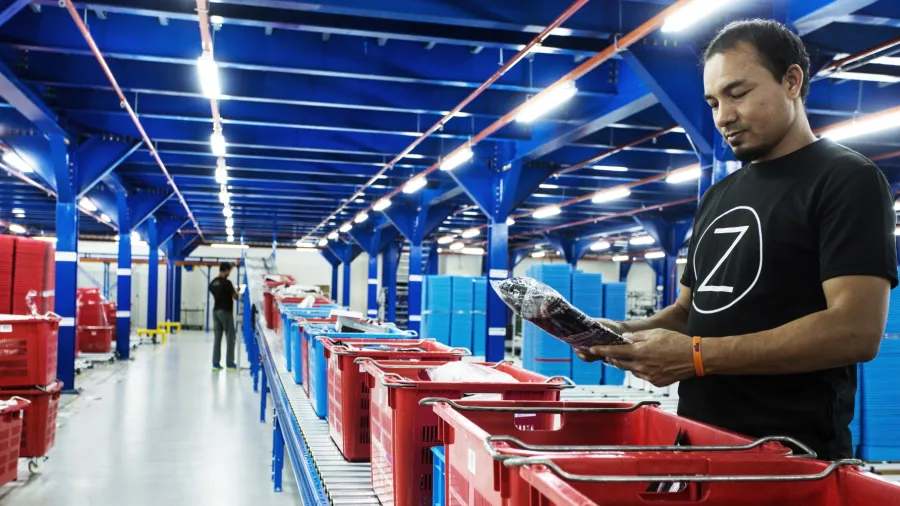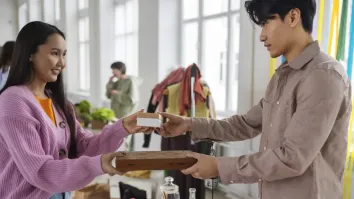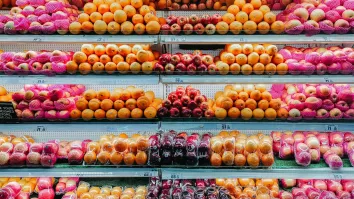
ZALORA ramps up sustainability amidst rising demand for eco-products
Customers of ZALORA who shop for sustainable products are increasing year by year.
AS sustainability marches to the forefront of e-commerce concerns, brands are driven to continue exploring various approaches to implement eco-friendly practices. For ZALORA, sustainability is a continuous cycle that begins within the company’s core operations and extends outward to actively involve its customers.
By doing so, ZALORA can create a lasting impact on the environment that fosters a culture of responsibility and awareness amongst consumers who are essential to the cycle’s ongoing success.
“We’ve enabled a situation for new technologies like this to embed itself in Malaysia, while it’s already pretty common in other countries, to push it into the Southeast Asian market as well,” Arvind Devadasan, head of sustainability at ZALORA, told ESG Business and Retail Asia in a recent interview.
Devadasan said around 30% to 40% of their customer base has been shopping with them, and this percentage is increasing each year. “[We are also] seeing the percentage of just sustainable materials contributing to the overall sold units increasing year by year as well,” he added.
For ZALORA, this increasing demand for sustainable products signifies a shift in consumer preferences. To capitalise on this trend and boost sales, the e-commerce platform urges brands to expand their sustainable offerings.
“We invite all the brands that are on our platform to make them understand why some of the materials [are] more sustainable options,” said Devadasan.
In the same breath, the e-commerce giant points out that the path to sustainability will not be linear but vary based on the best practices suitable for each brand.
So, the challenge now in the Southeast Asian market is the question of determining sustainability amongst the brands. “What is considered more sustainable?” asked Devadasan, who views this challenge of navigating this consumer preference shift as a “sort of [educational] journey.”
For some brands, ZALORA’s sustainability manager suggested that they rethink their material choices and opt for alternatives that are more sustainable.
“When we think about where fabrics are coming from in your next design, just think about what alternatives you can attend to, materials that you can use to give consumer choice, because clearly the customers demanded [for it],” he added.
Decarbonisation
From the warehouse to the customers’ hands, ZALORA delivers not only products but also its commitment to sustainability.
According to the International Organisation for Standardisation (ISO), the logistics and transport sector contributes over a third of global carbon dioxide (CO2) emissions, making it the largest-emitting sector in numerous developed countries.
ZALORA seeks to address this by adopting alternative logistics solutions as part of its sustainability initiatives aimed at reducing the company’s carbon footprint.
Along this line, Devadasan told ESG/Retail Asia about enabling new technologies like Electronic Data Interchange (EDI), which allows for the electronic exchange of purchase orders, invoices, and shipping notices, between trading partners.
“I think we are going to do the logistics in the meantime. Why [can’t we reduce] our carbon tax [by half]? Because [of] delivery vehicles, right? Like in Indonesia, there’s not that [much] innovations in terms of EDI just yet. I know it’s an increasing number, but it’s not up to scale yet,” he said.
Despite its status as an e-commerce giant, ZALORA continues to collaborate with smaller firms to achieve larger objectives.
“So what I’ve done is I worked with some startup partners who have EV-as-a-Service,” Devadasan said, noting ZALORA’s partnering with bicycles delivery services around the city. “So that’s zero carbon there.”
He also mentioned working with e-bikes to lower ZALORA’s carbon footprint, which is a service option it passes on to customers. “They (consumers) can actually choose if they want a lower carbon option or not. In terms of scaling up, we are in talks with a (potential partner) so we are hoping that sometime in the future we can also capitalise on that and offer that to our customers as well,” he said.
ZALORA also puts emphasis on ensuring that their partners follow the same principles when it comes to their corporate social responsibility — not only in environmental advocacies but even in human rights.
“[We] definitely have to ensure that basic human rights aren’t just assessed… [but] know those kinds of standards [are] adopted even in a warehouse,” said Devadasan, adding that this practice applies to all partners.
Recycling, sustainable alternatives
ZALORA’s commitment to sustainability is extended to its waste management practices, with a particular focus on handling returns.
Since returns inherently lead to additional waste, ZALORA has implemented the use of sustainable packaging alternatives to mitigate the environmental impact.
Devadasan said ZALORA actively improves waste management practices across all their Asian warehouses, including those in the Philippines and Indonesia.
“We have achieved a 90% diversion rate,” he said. “Any waste we generate, we try to find streams where we can either recycle them or reuse them — whatever that diverts them from being disposed of. We use them until they cannot be used anymore.”
He also highlighted that ZALORA’s primary packaging materials include cardboard, recycled polyethylene, and FSC certified papers and boxes, which replace conventional bubble wraps and plastic packaging.
These materials are designed in-house, ensuring they meet sustainability standards. “If it absolutely breaks down and can’t be used anymore, it goes into the recycling stream because these are materials that we can easily recycle and use in the industry,” Devadasan said.
By employing these strategies, ZALORA not only addresses the waste challenges associated with product returns but also aligns its operations with broader environmental sustainability goals.

















 Advertise
Advertise





